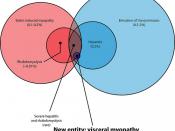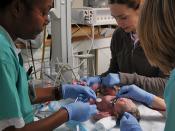Abstract:
Background
This review of the current literature of the intra-hospital transport of critically ill patients addresses the type and incidence of adverse effects, risk factors and risk assessment. The review will explore the available information on efficiency and cost-effectiveness of transferring such patients for diagnostic or therapeutic interventions within the hospital. Methods and guidelines to prevent or reduce potential hazards and complications are provided.
Methods
A Medline search was performed using the terms 'critical illness', 'transport of patients', 'patient transfer', 'critical care', 'monitoring' and 'intra-hospital transport'. All information concerning the intra-hospital transport of patients was considered.
Results
Adverse effects may occur in up to 70% of transports. They include a change in heart rate, arterial hypotension and hypertension, increased intracranial pressure, arrhythmias, cardiac arrest, change in respiratory rate, hypocapnia, hypercapnia and significant hypoxaemia. No transport-related deaths have been reported. In up to one-third of cases mishaps during transport were equipment related.
A long-term deterioration of respiratory function was observed in 12% of cases. Patient-related risk indicators were found to be a high Therapeutic Intervention Severity Score, mechanical ventilation, ventilation with positive end-expiratory pressure and high injury severity score, patients' age, duration of transport and destination of transport. Acute Physiology and Chronic Health Evaluation II score, personnel accompanying the patient and other factors were not found to correlate with an increased rate of complications. Transports for diagnostic procedures resulted in a change in patient management in 40-50% of cases, indicating a good risk/benefit ratio.
Conclusions
To prevent adverse effects of intra-hospital transportation, guidelines concerning the organisation of transport, personnel, equipment and monitoring should be established. In particular, the presence of a critical care physician during transport, proper equipment to monitor vital functions and to treat such disturbances immediately, and close control of the patient's ventilation are of major importance. It...


